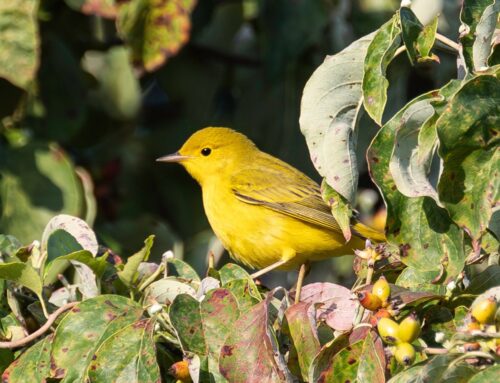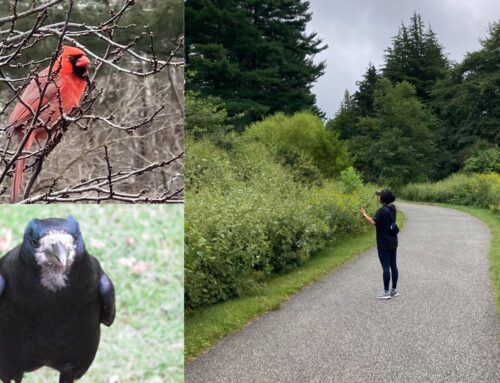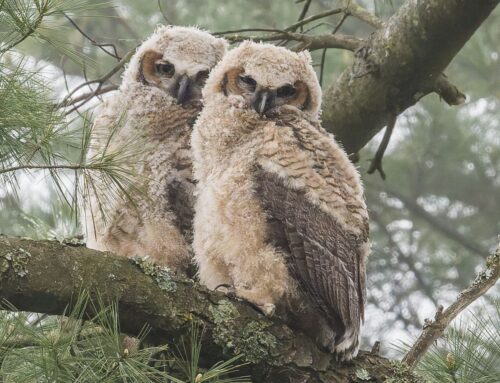Making a Comeback
Everyone seems to love bluebirds. And why not? They are beautiful, non-aggressive, insect-eating signs of spring. The Eastern bluebird is even the state bird of New York and Missouri. The surprising thing is many people who say they love bluebirds have never seen one in the wild. I attribute this to what I’ll call the Disney effect. If you were, like me, a child of the 50’s, you probably saw “Bambi” and “Cinderella”. Bluebirds are portrayed as friendly, cheerful friends of both title characters. In Cinderella the bluebirds wake Cinderella up, get her dressed, help make a ball gown, and, most importantly, help Cinderella get out of a locked room so she could try on the glass slipper. After watching this, who wouldn’t love bluebirds? Bluebirds could not have hired a better PR firm than Walt Disney!
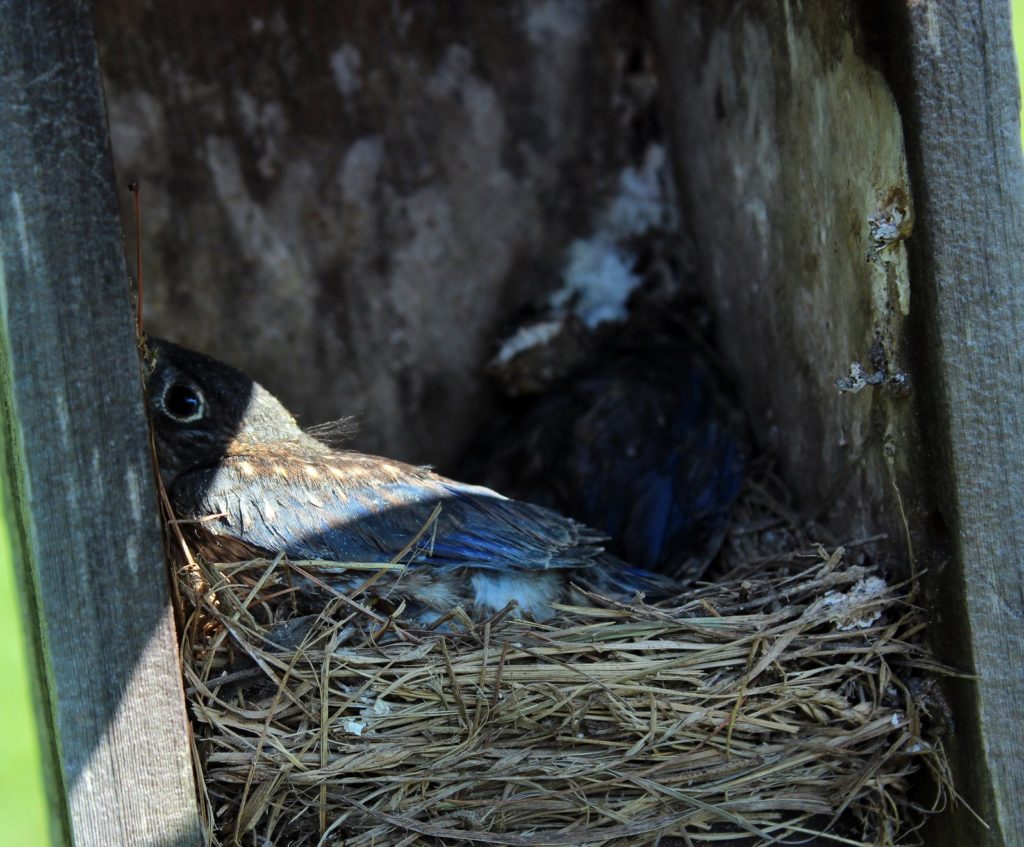
In the late 1800’s through early 1900’s, Pennsylvania was a paradise for bluebirds. Large portions of the state’s forests had been logged off and two-thirds of the state was farmland. The human population was half what it is now. Bluebirds thrived in the open spaces and found many tree cavities to raise their young. As the number of people grew, buildings began to replace farms. When non-native house (English) sparrows and European starlings were introduced to the U.S. in the 1800’s, the bluebirds had to compete with the much more aggressive new comers for nesting spots. Making matters worse was the widespread use of DDT beginning in the 1940’s. The pesticide killed off insects and caterpillars, which are the bluebirds ‘main source of food, and affected the viability of the birds’ eggs. Eventually, the forests also reclaimed much of the open space. Once as common as robins, bluebird populations were in sharp decline.
Fortunately, people started to notice. Among them was Larry Zeleny who wrote articles and gave speeches describing the dangers to the plummeting bluebird population. He was also instrumental in promoting the use of man-made bluebird houses to replace the declining availability of tree cavities. In 1978 he founded the North American Bluebird Society. Its mission is to “promote the recovery of bluebirds and other native cavity-nesting bird species in North America.” Subsequently, other more local organizations were formed, such as the Bluebird Society of Pennsylvania.
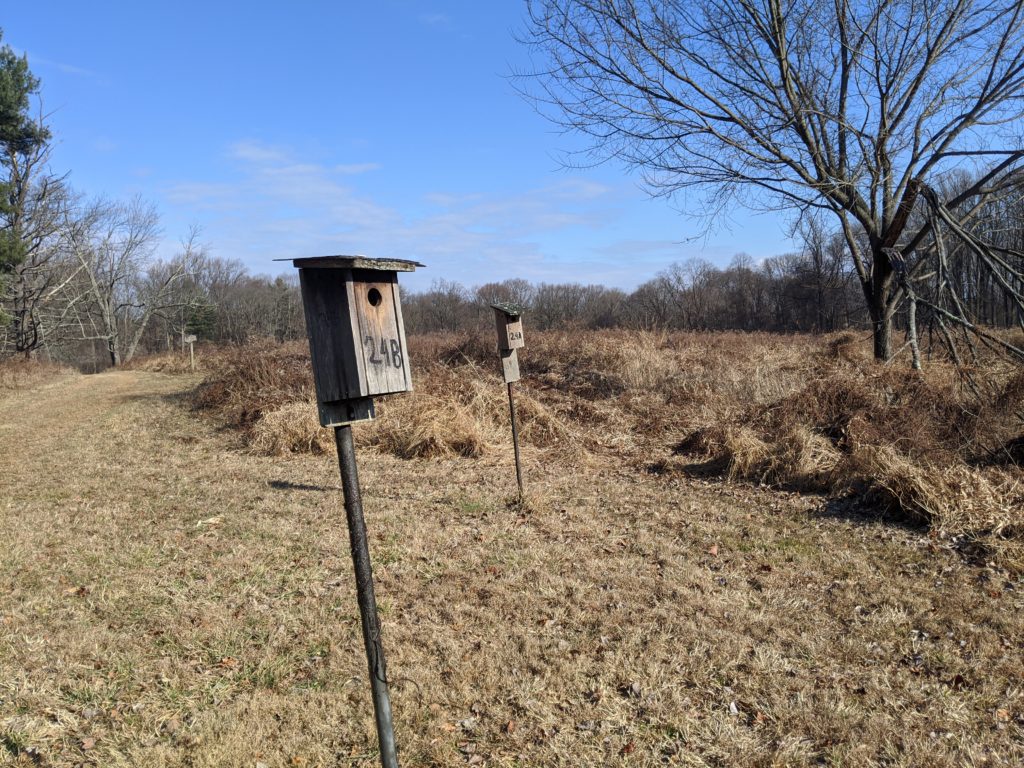
The Tyler Arboretum was an early supporter in the preservation of the Eastern bluebird. In the early 1970’s, we were the first place in Delaware County to put up nest boxes. Some of these nest boxes are still in use. At the present time, there are 40 nest boxes scattered throughout the arboretum. The most noticeable boxes are placed around the loop. I have been lucky enough to see several bluebirds while walking there. The meadow maze is a great place for finding insects. Heading our bluebird conservation efforts at Tyler is Suzanne Chauser. A former Tyler employee, Suzanne has been volunteering with the bluebird trail for over 20 years. Before the nesting season, April through August, Suzanne and 6 other volunteers clean out the nest boxes and put petroleum jelly on the nest poles to discourage predators, i.e., raccoons. After that the nest boxes are monitored once a week. Records are kept listing how many boxes are in use, how many eggs are laid and how many birds fledged. These statistics are relayed to the Delaware County Bluebird Society and the Pennsylvania Bluebird Society. As an example, in 2017 Delaware County reported 309 nest boxes, 619 eggs and 462 bluebirds fledged. At Tyler the number fledged has ranged from 53-124 successful fledglings with an average of over 73. Success is often dependent on the weather
I asked Suzanne why she is so committed to the bluebirds. She said she finds the bluebirds beautiful and charming. She is impressed with how hard both parents work to feed their families. They bring worms and insects back to the baby birds from dawn to dusk until they can get food on their own. She also finds helping the threatened bluebird to be very fulfilling. Thanks to the dedication of Suzanne and the other volunteers at Tyler, the bluebird population is making a comeback.


